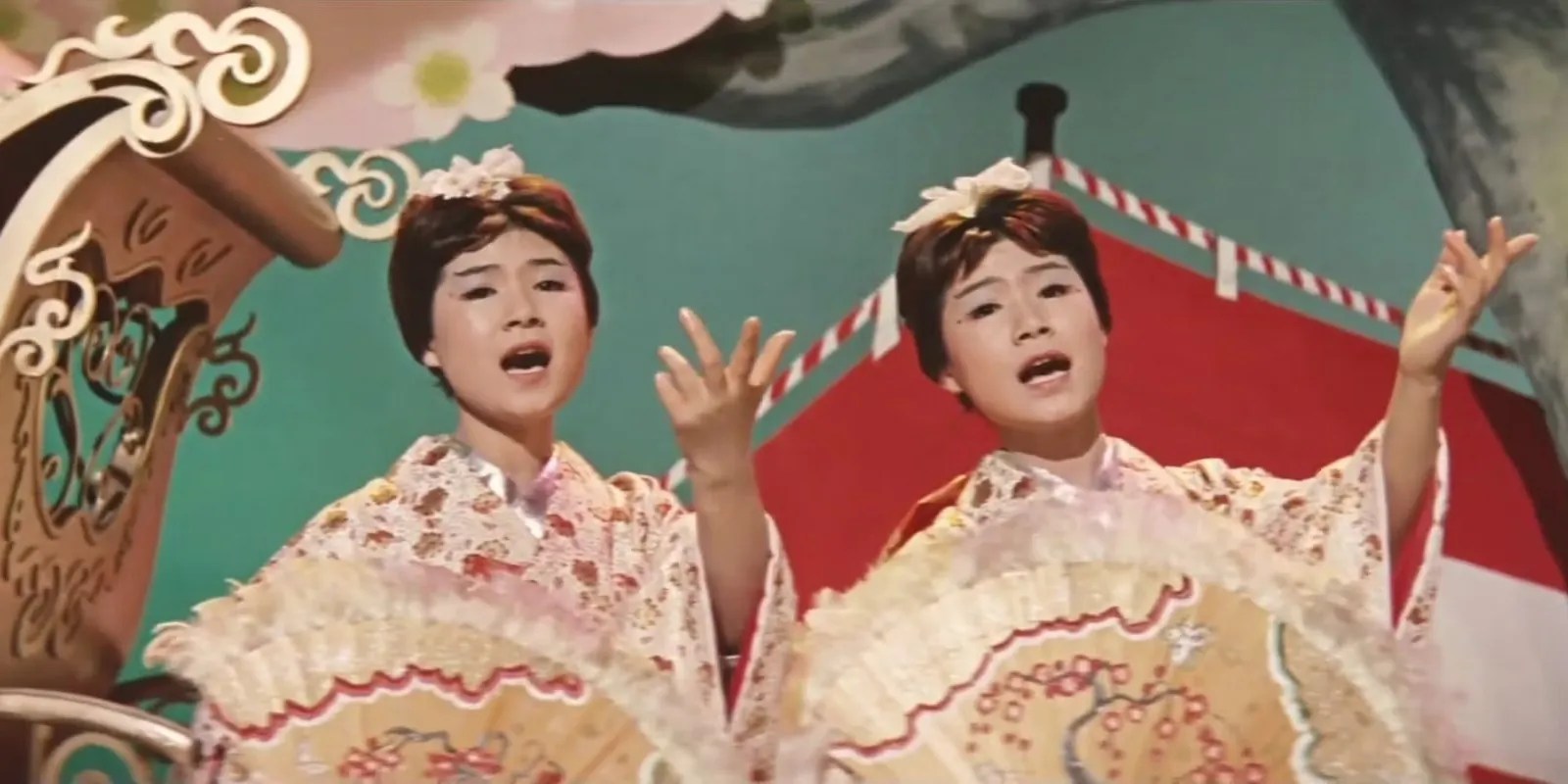Quick Links
There’s a lot to be said about characters that regularly pop up in theGodzillamovies. Naturally, there’s The King of Monsters and the various kaiju that he grapples with. Then there are thecolorful alien raceswho use devices to mind control kaiju to do their bidding. There are also some prominent human characters that recur, from psychic Miki Saegusa to the lesser loved Dr. Niko Tatopoulos fromGodzilla(1998) and the sequel cartoonGodzilla: The Series. However, there’s a duo of Godzilla regulars that doesn’t fit into either of those categories, but they are just as memorable.
The Shobijin (“little beauties”) are twin fairies that are inextricably linked toThe Queen of Monsters, Mothra. They made their debut inMothra(1961), Mothra’s debut before she first tangled with Godzilla. Together, they lived on Infant Island, an uncharted island populated by an indigenous people who see Mothra as a goddess. The island, once lush and green, has been ravaged by nuclear testing, giving its inhabitants a distrust of outsiders. InMothra, the twins are initially discovered and captured by the Rolisicans, inhabitants of a fictional western nation. Mothra spends the film desperately trying to get them back, but what is it about these tiny fairies that make them so important to an all-mighty kaiju like Mothra?

They Serve as Priestesses and Translators for Mothra
The Shobijin make an impression. Together, these (usually) identical twins speak, pray, and sing in unison. Using their telepathy, the Shobijin often translate Mothra’s messages to humans, even from far way. Not only can they translate Mothra’s cries, but as shown inGhidorah, Three Headed Monster(1964), they can translate forother monsters as well, such as Godzilla and Rodan.Godzilla vs. Mothra(1992) elevated the status of the Shobijin even more. In the Heisei era, they were dubbed “Cosmos” and were said to be the last of an ancient civilization wiped out byMothra’s evil counterpart Battra. Later on, in theRebirth of Mothra Trilogy, they are renamed Elias. In this incarnation, the two main Elias sisters are individually dubbed Lora and Moll. They are also even given an additional family member.
As the resident evil triplet, Belvera was cruel with a pretty sizable hatred of humanity. Likea lot ofGodzillavillians, Belvera’s beef with humanity mainly stemmed from the horrible ways humanity has polluted the planet, a commonGodzillatheme. As a result, she was a follower of Battra and lived without any other Elias on Adona Island, even going so far as to have to construct robot animals for companionship. However, in the end, Belvera’s love for her sisters proved stronger than her hatred for humanity. InRebirth of Mothra 2(1997), despite their differing views, Belvera is shown to genuinely care. This culminates inRebirth of Mothra 3(1998), where Belvera helps her sisters save the day against the dreaded King Ghidorah.

They Tend to Be Played by Singers and Beauty Queens
The most famous of the Shobijin are the original actresses, Yumi and Emi Ito. Yumi and Emi were identical twin sisters and sang together as the vocal duo The Peanuts. (Not to be confused with a certain comic featuring ashow-stealing beagle.) They made their debut inMothra(1961) and would go on to appear inMothra vs. Godzilla(1964) andGhidorah, the Three-Headed Monster(1964). Their portrayal is iconic, especially their performance of “Mothra’s Song”. They were even parodied inSouth ParkSeason 1, Episode 12 “Mecha-Streisand”, where two Shobijin tell Sidney Poitier that the boys have found that episode’s MacGuffin. Yoko and Yuko Okada, another sister singing duo dubbed Pair Bambi, would go on to replace Yumi and Emi, though the Shobijin did not have much to do during their tenure.
The next duo that would play the Shobijin would appear inGodzilla vs. Mothra(1992) andGodzilla vs. Space Godzilla(1994).They were Keiko Imamura and Sayaka Osawa. Keiko was the winner of Toho’s 1991 Cinderella Beauty Contest and Sayaka was the Jury Prize winner. This was when the Shobijin were known as the Cosmos, so it makes sense that there would be a slight break in tradition in regard to casting. TheRebirth of Mothratrilogy, with its Elias sisters, would go even further, casting more traditional actresses. Fitting, since all three sisters did not speak in unison and had their own distinct personalities. However, beauty queens would be back to play the Shobijin inGodzilla: Tokyo S.O.S. (2003) andGodzilla: Final Wars(2004). Chihiro Otsuka and Nagasawa Masami were the 2000 Cinderella Beauty Contest Jury Prize and Grand Prix winners, respectively.

Although Mothra and the Shobijin have been linked for decades throughout the franchise, it’s not hard to see why the Monsterverse decided to go a different direction. Changing who is connected to Mothra from fairies to Jia, an established character andpart of the Iwi People, makes sense for the franchise, which strives to be more cohesive than its Toho origins. Even so, there’s just something so incredibly delightful about the Shobijin. Why shouldn’t your moth deity have tiny twin translators? There’s a kind of creative weirdness to that idea that tends to be shied away from in adaptations that strive to make Godzilla and company more serious. However, for fans of the more lighthearted side of the Godzilla franchise, the Shobijin will always be adored.